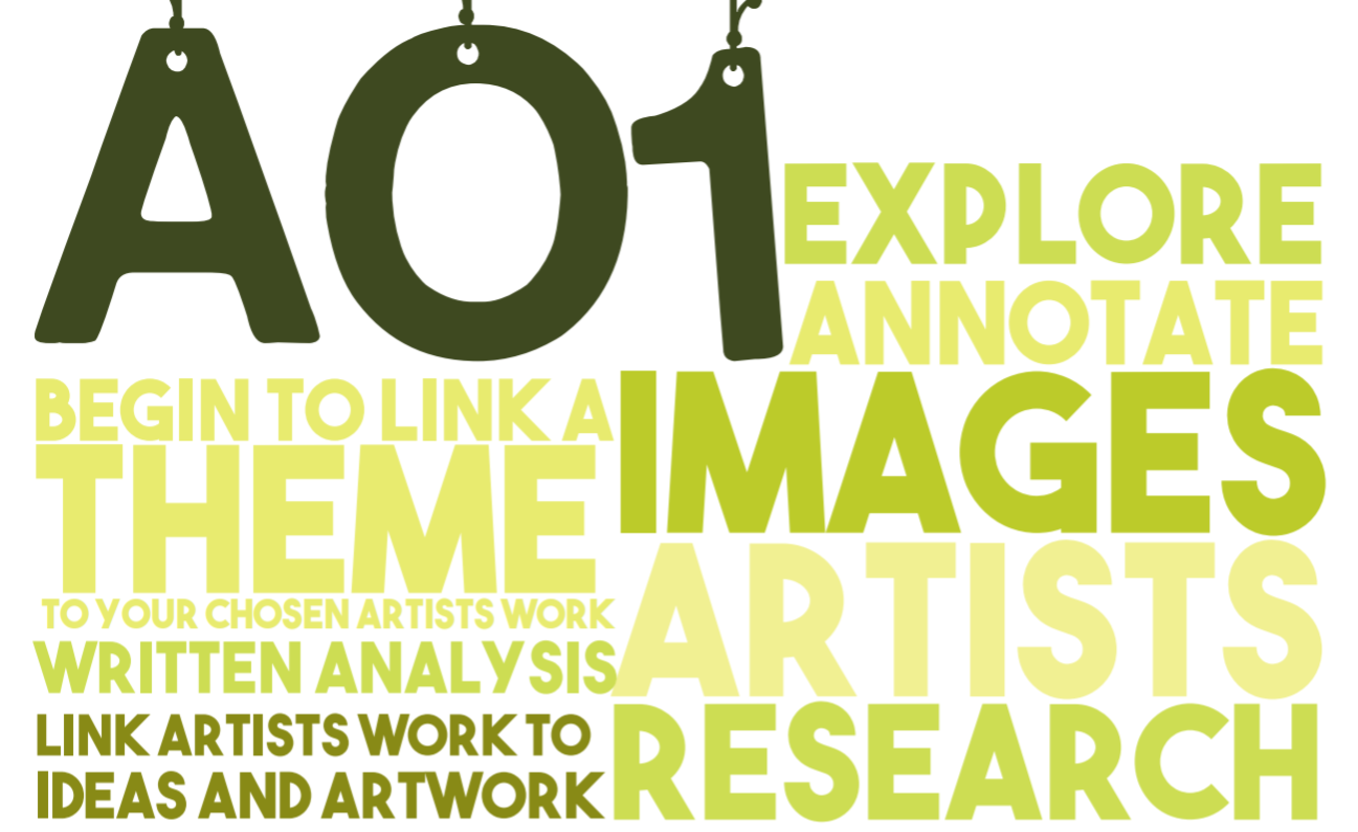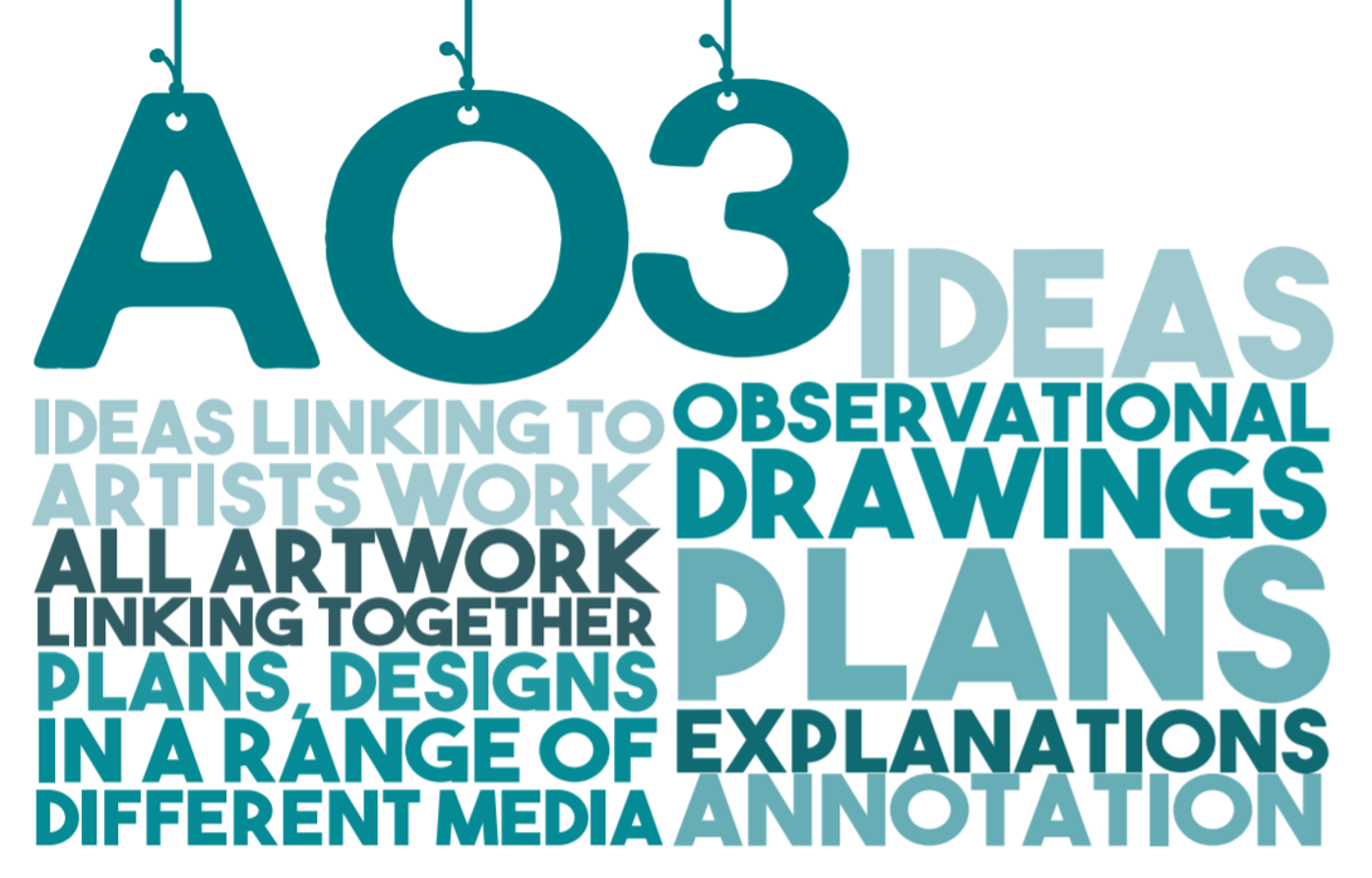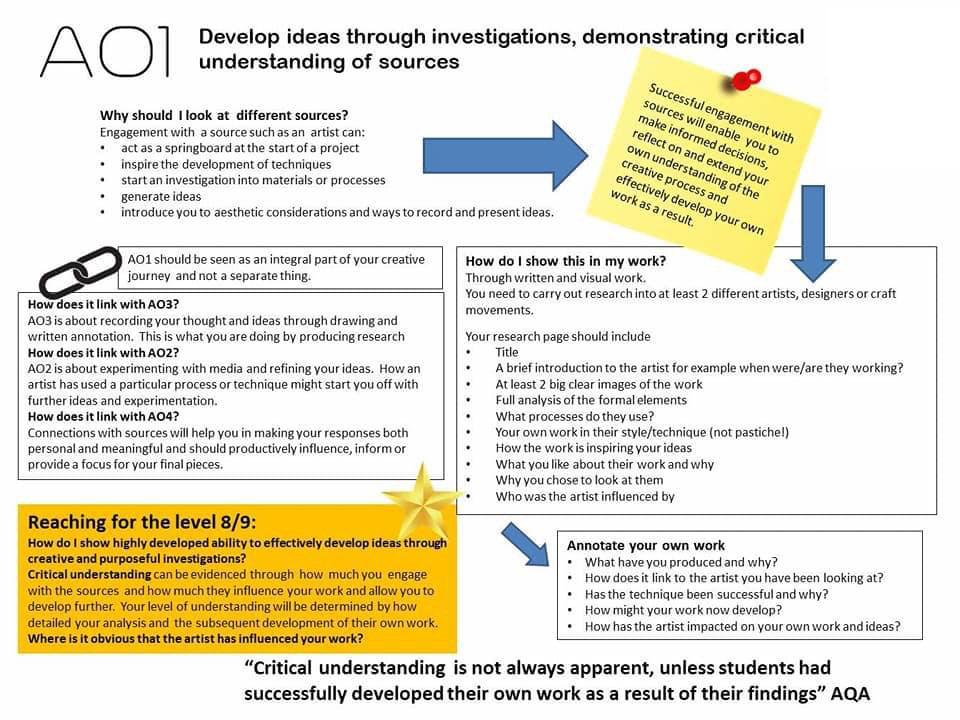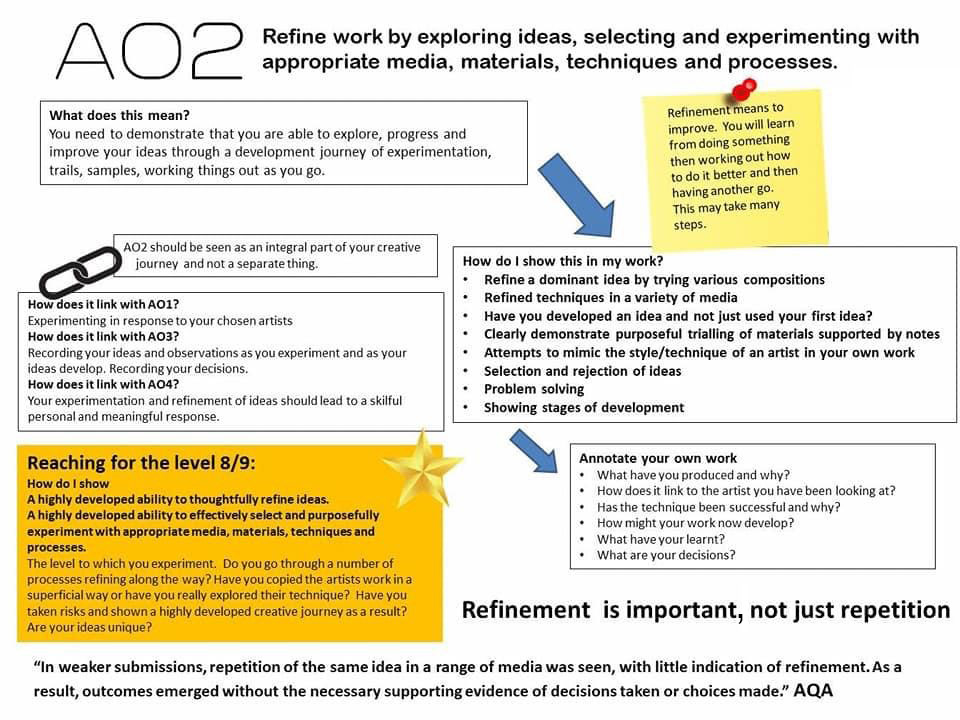Options PowerPoint:
This PowerPoint offers an introduction to the course for anyone trying to decide whether to pick Fine Art or not. It includes an example project by a previous student.
Where could GCSE Art take you?
Summary:
The exam board: AQA
The endorsement: Art and Design (Fine Art)
The endorsement: Art and Design (Fine Art)
There are two components (projects) to the GCSE. The first is called the Portfolio unit and is comprised of two projects that are marked together. The second is called the Externally-Set Assignment:
Portfolio Unit
• Practice Project: due February of Year 10
• Major Project: due December of Year 11
• Major Project: due December of Year 11
What's assessed
A portfolio that in total shows explicit coverage of the four assessment objectives. It must include a sustained project evidencing the journey from initial engagement to the realisation of intentions and a selection of further work undertaken during the student’s course of study.
How it's assessed
• No time limit
• 96 marks
• 60% of the GCSE (both projects marked together)
• 96 marks
• 60% of the GCSE (both projects marked together)
Externally-Set Assignment
• Final project: due May of Year 11
What's assessed
Students respond to their chosen starting point from an externally set assignment paper relating to their subject title, evidencing coverage of all four assessment objectives.
How it's assessed
• Preparatory period (from 2nd January)
• Followed by 10 hours of supervised time in May
• 96 marks
• 40% of the GCSE
• Followed by 10 hours of supervised time in May
• 96 marks
• 40% of the GCSE
Fine Art
Fine art practice is defined here as the need to explore an idea, convey an experience or respond to a theme or issue of personal significance.
Areas of study
Students are required to work in one or more area(s) of fine art, such as:
• Drawing
• Painting
• Sculpture
• Installation
• Lens-/light-based media
• Photography and the moving image
• Printmaking
• Mixed media
• Land art
• Painting
• Sculpture
• Installation
• Lens-/light-based media
• Photography and the moving image
• Printmaking
• Mixed media
• Land art
They may explore overlapping areas and combinations of areas.
Assessment objectives




Assessment objectives (AOs) are set by Ofqual and are the same across all GCSE Art and Design specifications and all exam boards.
• AO1: Develop ideas through investigations, demonstrating critical understanding of sources.
• AO2: Refine work by exploring ideas, selecting and experimenting with appropriate media, materials, techniques and processes.
• AO3: Record ideas, observations and insights relevant to intentions as work progresses.
• AO4: Present a personal and meaningful response that realises intentions and demonstrates understanding of visual language.




Unpicking Assessment Objective 2:
Full Specification:
AQA's Guide to drawing for different purposes
AQA's Guide to written annotation